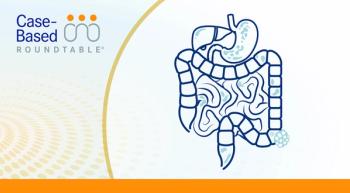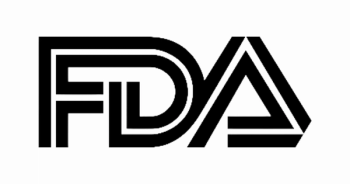
Lenvatinib Plus Belzutifan Shows Activity in Advanced Kidney Cancer
Lenvatinib plus belzutifan showed durable activity and a consistent safety profile in advanced clear cell renal cell carcinoma after prior treatment.
Findings from the phase 1/2 KEYMAKER-U03 substudy 03B (NCT04626518), presented at the 2025 ASCO Genitourinary Cancers Symposium, showed that lenvatinib (Lenvima) plus belzutifan (Welireg) demonstrated durable antitumor activity and a safety profile consistent with prior reports in patients with locally advanced or metastatic clear cell renal cell carcinoma that progressed after PD-L1 inhibitor or VEGF-tyrosine kinase inhibitor treatment.
Efficacy data revealed that between 3 arms––pembrolizumab (Keytruda)/belzutifan (n = 62; arm B4); lenvatinib/belzutifan (n = 64; arm B5); and pembrolizumab/lenvatinib (n = 73; reference arm)––lenvatinib/belzutifan elicited the greatest number of responses. The objective response rate (ORR) in arms B4, B5, and the reference arm, respectively, were 19.4%, 46.9%, and 39.7%. In each respective arm, 2, 1, and 0 patients attained complete responses and 10, 29, and 29 attained partial responses.
Further data exhibited a clinical benefit rate (CBR) of 32% (95% CI, 21%-45%) in arm B4, 59% (95% CI, 46%-72%) in arm B5, and 58% (95% CI, 45%-69%) in the reference arm. In the respective arms, the median duration of response (DOR) was not reached (range, 1.4+ months to 33.0+), 22.1 months (range, 1.4+ to 32.8+), and 8.3 months (range, 2.6+ to 25.6+).
In arm B4, arm B5, and the reference arm, the median progression-free survival (PFS) was 5.4 months (95% CI, 2.8-6.9), 12.5 months (95% CI, 5.9-26.3), and 9.4 months (95% CI, 6.9-11.2), respectively. The 6-month PFS rates in the respective arms were 41.8%, 63.1%, and 66.7%, and the 12-month rates were 28.6%, 51.8%, and 34.5%.
The median overall survival (OS) was 27.4 months (95% CI, 12.6-not reached [NR]) in arm B4, 32.3 months (95% CI, 22.4-NR) in arm B5, and NR (95% CI, 21.8-NR) in the reference arm. The 12-month OS rates were 67.9%, 79.5%, and 81.7% in the respective arms, with 18-month rates of 57.6%, 74.4%, and 73.2%.
In arm B4, 66.1% of evaluable patients experienced a target lesion size reduction, 28.8% of whom had a reduction of 30% or greater. In arm B5, it was 88.3% and 60.0%, respectively, as well as 91.8% and 49.3% in the reference arm.
“In KEYMAKER-U03 Substudy 03B, in a patient population with many prior treatment lines, we see that lenvatinib plus belzutifan showed an ORR of [46.9%] with a median PFS of 12.5 months,” Katy Beckermann, MD, PhD, medical oncologist and medical director of Genitourinary Clinical Research at Tennessee Oncology, stated in the presentation.1 “We saw results from the pembrolizumab plus belzutifan arm were similar to those observed in the belzutifan monotherapy arm in the phase 3 LITESPARK-005 study [NCT04195750]....Results from Substudy 03B showed promising clinical activity in the lenvatinib plus belzutifan arm, and we recognized that the phase 3 LITESPARK-011 trial [NCT04586231] was ongoing and was testing this combination compared [with] cabozantinib [Cabometyx].”
In the LITESPARK-005 study, patients with advanced ccRCC who received previous immune checkpoint and antiangiogenic therapies were randomly assigned 1:1 to receive either 120 mg of oral belzutifan or 10 mg of oral everolimus (Afinitor) until disease progression or unacceptable toxicity.2 At the first interim analysis, the median PFS in the belzutifan arm was 5.6 months, with an 18-month PFS rate of 24.0%. Additionally, the confirmed ORR was 21.9% (95% CI, 17.8%-26.5%), and at a second interim analysis, the median OS was 21.4 months with an 18-month OS rate of 55.2%.
The LITESPARK-011 trial is currently ongoing and randomly assigning patients with advanced RCC who experienced progression after prior anti–PD-L1 therapy to receive either belzutifan/lenvatinib or cabozantinib.3 The primary study end points are PFS per RECIST v1.1 criteria and OS.
Patients enrolled in KEYMAKER-U03 substudy 03B were randomly assigned 1:1 to receive pembrolizumab/belzutifan or lenvatinib/belzutifan. Arms B4 (n = 10) and B5 (n = 12) had a safety lead-in phase wherein approximately 10 patients were enrolled before random assignment. Afterwards, patients were assigned to arm B4 (n = 52), arm B5 (n = 52), or the reference arm (n = 73) during the efficacy phase.
Patients were stratified by International Metastatic RCC Database Consortium (IMDC) risk factors and prior treatment with CTLA-4 inhibition. Additionally, patients were required to have measurable disease per RECIST v1.1 criteria by blinded independent review committee (BICR) and a Karnofsky performance status score of 70% or greater for enrollment.
Those in arm B4 were treated with 400 mg of intravenous pembrolizumab every 6 weeks plus 120 mg of daily oral belzutifan. Patients in arm B5 were treated with 20 mg of daily oral lenvatinib plus 120 mg of daily oral belzutifan. Patients in the reference arm were treated with 400 mg of intravenous pembrolizumab every 6 weeks plus 20 mg of daily oral lenvatinib.
Patients in arms B4, B5, and the reference arm had a median age of 62 years (range, 32-86), 60 years (range, 33-60), and 63 years (range, 36-85), respectively. In the respective arms, 75.8%, 76.6%, and 78.1% were male; 64.5%, 53.1%, and 54.8% had an ECOG performance status of 1; and 66.1%, 59.4%, and 68.5% had an intermediate IMDC risk. Furthermore, 46.8%, 48.4%, and 43.8% of respective arms had unknown or missing sarcomatoid features; 37.1%, 35.9%, and 35.6% had prior first-line CTLA-4 inhibition therapy; and 56.5%, 42.2%, and 49.3% had 3 or more prior lines of therapy.
The primary study end points were ORR per RECIST v1.1 criteria by BICR and safety. Secondary end points included DOR, CBR, PFS per RECIST v1.1 criteria by BICR, and OS.
Across all cohorts, 100% of patients experienced any-grade adverse events (AEs). In arms B4, B5, and the reference arm, grade 3 to 5 AEs occurred in 64.5%, 77.8%, and 76.7% of the respective arms. AEs leading to dose interruption occurred in 54.8%, 71.4%, and 58.9% of each respective arm, with AE-related discontinuations occurring in 16.1%, 14.3%, and 16.4%, and AE-related deaths occurring in 3.2%, 4.8%, and 2.7% of patients.
Treatment-related AEs (TRAEs) occurred in 95.2%, 95.2%, and 98.6% of the respective arms. Grade 3 to 5 TRAEs occurred in 41.9%, 60.3%, and 49.3%, respectively, with TRAEs leading to treatment continuation occurring in 11.3%, 9.5%, and 12.3% of the respective arms. Treatment-related AEs resulting in death occurred in 0%, 3.2%, and 1.4%, respectively.
The most common TRAEs in the respective arms included anemia (69.4%, 65.1%, 4.1%), diarrhea (4.8%, 42.9%, 56.2%), hypertension (0%, 36.5%, 52.1%), fatigue (24.2%, 46.0%, 34.2%), and nausea (12.9%, 38.1%, 24.7%).








































